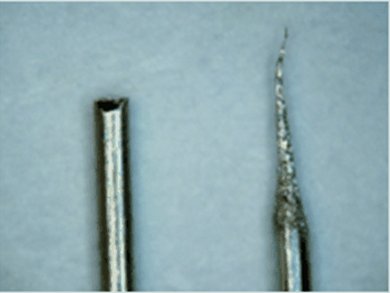Environmentally Friendly Platinum Recycling
Precious metals, especially platinum, are important catalytic materials for many chemical reactions. For example, platinum is used in some fuel cells; however, broad commercialization of such fuel-cell technology is hampered by the fact that platinum is rare and thus far too expensive. Growing demand is making it necessary to develop efficient and environmentally friendly processes for recycling platinum. Jing-Fang Huang and Hao-Yuan Chen at the National Chung Hsing University in Taiwan have now introduced a new approach in the journal Angewandte Chemie. Their method is based on the dissolution of the metal in an ionic liquid.
Recycling platinum is a difficult, complicated process. The first step is the dissolution of the used platinum. Because platinum is a very special precious metal, this isn’t so easy. The solvents used for this are usually highly corrosive aqua regia, a mixture of nitric and hydrochloric acids, or a highly oxidizing mixture of sulfuric acid and hydrogen peroxide known as piranha. There are also electrochemical recycling processes, but these mostly require highly toxic electrolytes or corrosive media, or they release toxic gases. They also suffer from insufficient current densities and passivation of the electrodes.
Electrochemical Dissolution
Huang and Chen have now developed a novel process that avoids all of these disadvantages. In this procedure, platinum is electrochemically dissolved in a mixture of zinc chloride and a special ionic liquid. An ionic liquid is an organic salt that is in a melted state at temperatures below 100 °C. Ionic liquids are considered environmentally friendly solvents because they have very low vapor pressures and are very thermally stable, so they do not release any toxic substances. They also have high ionic conductivity, which makes them very useful in electrochemical applications.
The used platinum is introduced in the form of an electrode, a voltage is applied, and the surrounding ionic liquid heated to about 100 °C. The platinum then dissolves surprisingly fast. The dissolved platinum can then be removed on a carrier electrode, either as the pure metal or as a zinc alloy, without prior treatment of the solution. The scientists are optimistic that this process can also be adapted for other precious metals.
Says Huang: “We are doing our best to solve the problem about the effective use of precious metals. The recycling of precious metals is a possible strategy. Even now, we do not think we have found the best process. We will continuously modify the process in order to extend its applications or look for a much better one”.
Image: © Wiley-VCH
- Heat-Assisted Electrodissolution of Platinum in an Ionic Liquid,
J,-F. Huang, H.-Y. Chen,
Angew. Chem. Int. Ed. 2012.
DOI: 10.1002/anie.201107997




